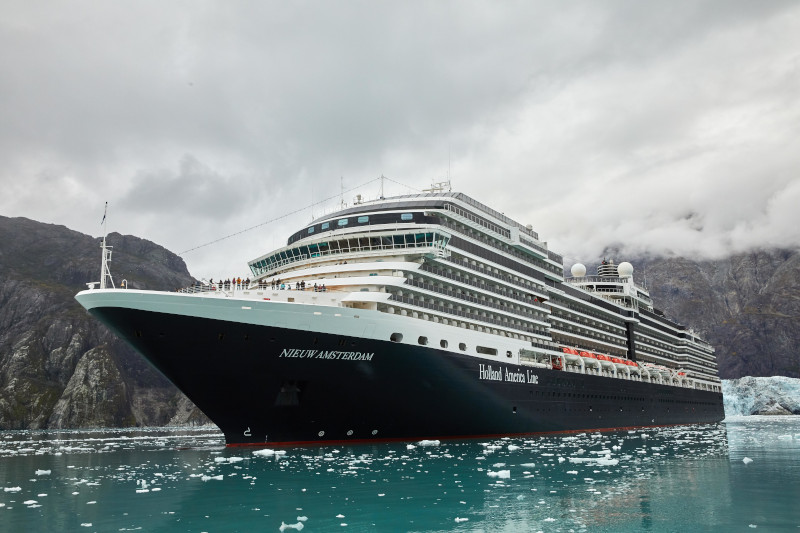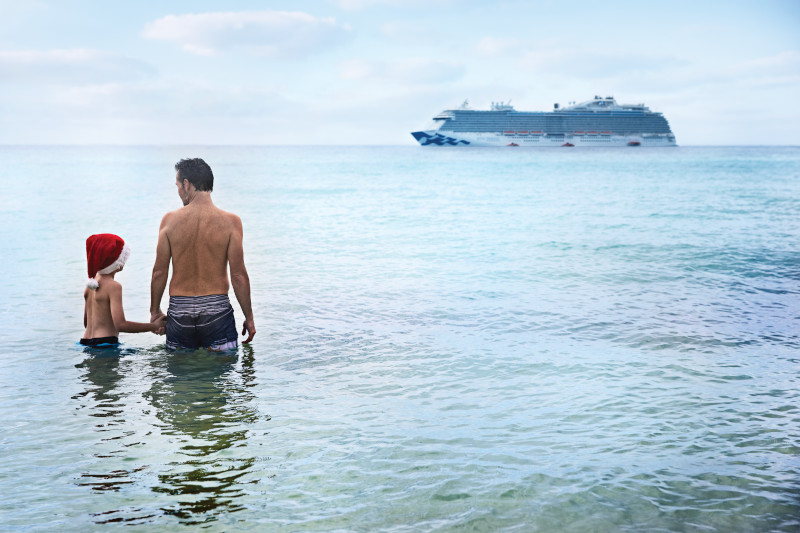
As your cruise comes to an end, the final day at sea often brings a mix of excitement and stress. While you’ve enjoyed breathtaking views, exceptional dining, and thrilling excursions, now it's time to prepare for disembarkation — the process of leaving the ship and heading to your next destination.
Disembarkation can be a chaotic experience if not approached with the right mindset and preparation, so understanding the details ahead of time is crucial for ensuring the day goes smoothly.
Knowing what to expect on the last day aboard can help you avoid unnecessary stress, streamline your morning, and make the transition from cruise life back to reality much easier. From packing your bags to getting off the ship and through customs, there are several steps involved. The more prepared you are, the quicker and more relaxed the entire process will be. This guide will provide you with a comprehensive overview of what to expect during disembarkation, with tips on how to handle each stage, ensuring your final day at sea is as stress-free as possible.
The Disembarkation Timeline

The disembarkation process typically starts early in the morning and can span a few hours, depending on the cruise line, the port, and your disembarkation group. Understanding the general timeline will help you anticipate what’s ahead, making your final day much smoother.
On your last night aboard, you’ll receive instructions about the disembarkation procedure, including your assigned time to leave the ship. Most cruise lines will divide passengers into groups, with each group assigned a specific time to disembark. This helps to avoid a rush and ensures a more organized process. Your group will be based on factors like the deck you’re staying on, loyalty status, or special circumstances (e.g., flight times).
The morning of disembarkation begins with breakfast, often served between 6:00 AM and 8:00 AM, depending on your group and the port schedule. Cruise lines typically offer a buffet-style breakfast in the main dining areas, or you can enjoy room service. You’ll want to finish your meal early, as you may need to be ready to leave shortly afterward.
Once you’ve eaten, it’s time to head to the designated disembarkation area with your luggage. Some cruise lines may offer luggage collection the night before, allowing you to simply carry your essentials for the morning. Be sure to double-check your cabin and pack everything before heading out to avoid leaving anything behind. Be patient and follow the instructions provided by the crew to ensure a smooth departure.
Packing and Preparing for Disembarkation

Packing the night before disembarkation is essential for ensuring a smooth and stress-free morning. Start by packing your suitcases the evening before the last day of your cruise. Most cruise lines ask guests to leave their checked luggage outside their cabins by a specified time, usually between 8:00 PM and 10:00 PM. Be sure to pack everything you won’t need the next day into your larger suitcases. This includes clothing, toiletries, and other personal items.
Leave out essential items that you’ll need on the morning of disembarkation, such as a change of clothes, toiletries, medications, and travel documents. It’s best to keep these items in a smaller carry-on bag that you can easily access. You’ll also want to have your passport, ID, and any tickets or travel confirmations readily available, as you’ll need them when going through customs and immigration.
If you carry valuables like jewelry, electronics, or other important items, it’s wise to keep these in your carry-on bag rather than packing them away. This ensures that they are safe and accessible when you need them. Make sure to charge any electronics overnight, so you’re ready to go when the day begins.
By taking care of these packing tasks the night before, you can enjoy your last evening on board without the stress of last-minute packing. A little preparation will allow you to have a calm morning as you prepare to disembark the ship.
Disembarkation Process: Step by Step

The disembarkation process typically involves a few key steps, with guests leaving the ship in an organized manner to avoid congestion and delays. Most cruise lines will assign you a specific departure time, and passengers are grouped according to deck, color, or number. You’ll find out your assigned group the night before disembarkation, and it’s important to be ready when your group is called. When the time comes, you’ll head to the designated disembarkation area, usually in the ship’s main lobby or a large common space.
Expect queues as passengers wait to leave, especially in the morning when several groups are scheduled to depart. However, the crew will direct you efficiently and help ensure the process is smooth. The disembarkation process will involve passing through customs and security checks, where you’ll need to show your passport, boarding passes, and any necessary travel documents. Be sure to have these readily available to avoid delays.
As for your luggage, you’ll either need to handle it yourself or have it taken by the crew. Many cruise lines will ask you to leave your luggage outside your cabin the night before, and the crew will transport it off the ship. If you opted to carry your luggage, you’ll take it with you as you exit the ship.
Once you disembark and pass through customs, you’ll head to the port where transportation options await, including taxis, shuttles, or pre-arranged transfers. Be sure to stay patient during this final leg of the journey, as the process can take some time, but it’s all part of the adventure!
Clearing Customs and Immigration

Clearing customs and immigration is an essential step in the disembarkation process, ensuring that you’re properly processed before entering a new country or returning home. When you disembark, you'll go through customs and immigration control, where you’ll need to show the required documents. Have your passport, any necessary visas, and your boarding passes or travel tickets ready to present. Make sure these documents are easily accessible, as you'll need to show them multiple times during the process.
If you're traveling internationally, the immigration officer will verify your travel documents and may ask a few questions about your trip. Be prepared to answer questions such as the purpose of your visit, the duration of your stay, and where you're headed next. If you’re returning to your home country, you may be required to complete a customs declaration form, outlining what items you're bringing with you.
For domestic travel, the process will be quicker, but you'll still need to show identification and any necessary documents. Be patient and cooperative with customs officials, as they are helping ensure everyone’s safety and compliance with the regulations.
Ground Transportation and Transfers

Once you’ve cleared customs and immigration, it’s time to consider how to get from the port to your next destination—whether that’s the airport or a hotel. Several transportation options are available, so choose the one that best suits your needs.
Taxis are a quick and convenient option, with many available just outside the cruise terminal. They offer door-to-door service but may involve long waits during peak times. Cruise lines also offer shuttle services, which can be a cost-effective way to get to the airport or hotel, especially if you're traveling in a group. These shuttles often need to be booked in advance, either through the cruise line or an independent provider.
For a more comfortable and personalized experience, private transfers are available, offering direct service to your desired location. These can be booked ahead of time through the cruise line or third-party companies. Booking in advance is often recommended, especially if you're traveling to a busy airport or have tight connections.
If you haven’t arranged transportation in advance, don't worry! You can usually find options available at the port, but be prepared for longer wait times, particularly during busy disembarkation periods.
What Happens if You Have a Late Departure

If you have a late departure, such as a late flight or extended hotel stay, you may be able to enjoy some extra time aboard the ship or in the local area. Many cruise lines allow guests with late departures to remain onboard until later in the day, though you’ll need to confirm this option in advance. For those staying on the ship, there may be access to special lounges, where you can relax and enjoy light snacks or beverages while waiting.
Alternatively, some cruise lines offer access to certain areas of the ship, but certain amenities like restaurants and entertainment may be limited. If staying onboard isn’t an option, you’ll need to disembark but can spend time at the port or explore the city until it’s time to head to the airport. Some ports offer luggage storage services, allowing you to drop off your bags before sightseeing.
It’s important to check with your cruise line about the options available for late departures as policies may vary. Having extra time can be a great opportunity to take in more of the local culture or simply enjoy a relaxed final day of your vacation.
Cruise Line-Specific Disembarkation Protocols

Disembarkation protocols can vary between cruise lines, so it’s important to familiarize yourself with the specific policies of the cruise you’re on. For example, some cruise lines like Celebrity Cruises or Royal Caribbean have a system where passengers are grouped based on their cabin category, with suite guests and loyalty members given priority disembarkation. These guests can leave the ship earlier, avoiding the crowds and long waits associated with later groups.
Other lines, like Carnival Cruises, may assign passengers to disembarkation groups based on their deck or loyalty status. If you're a frequent cruiser or a member of a special rewards program, you may be able to enjoy a faster departure, with priority access to the disembarkation area. Additionally, certain luxury lines, such as Seabourn or Regent Seven Seas, might offer more personalized services, including expedited luggage handling and disembarkation at more flexible times.
Understanding the disembarkation procedures specific to your cruise line helps you plan your final day better and avoid unnecessary stress. Be sure to check your cruise line’s guidelines well in advance to take advantage of any benefits available for your cabin category, loyalty status, or special arrangements.
Tips for a Smooth Disembarkation

To ensure a smooth and stress-free disembarkation, preparation is key. Staying calm and organized can make all the difference as you prepare to leave the ship. Remember, disembarkation is a busy process for both passengers and crew, so it’s important to keep a positive attitude and be patient.
Double-check your personal belongings the night before and again in the morning. Make sure you’ve packed everything from your cabin, including any chargers, toiletries, and travel documents. A quick walk-through of your cabin can help ensure nothing is left behind. Don't forget to check closets, drawers, and bathrooms for any forgotten items.
Plan ahead for contingencies, such as flight delays or lost luggage. If you have a tight connection or are worried about your flight schedule, confirm your transportation arrangements and give yourself extra time to account for potential delays. If your luggage is lost or delayed, report it immediately to the cruise line or port authorities. Most cruise lines have a process for tracking down missing luggage, but having a backup plan, like a carry-on with essentials, will help ease any anxiety.
Remaining flexible and patient throughout the process is crucial. Disembarkation can take time, and you may face longer queues or unexpected delays. Take it in stride and use the time to reflect on your amazing cruise experience or enjoy your final moments aboard the ship. By preparing well and keeping a calm mindset, you’ll make the end of your cruise as enjoyable as the beginning.
Have a Disembarkation Day!

Preparation is the key to a smooth and stress-free disembarkation process. By following the necessary steps, packing efficiently, and remaining calm, you can ensure a hassle-free end to your cruise. Don’t forget to double-check your belongings, plan for any contingencies, and stay flexible throughout the process. While disembarkation marks the end of your journey, it also offers a chance to reflect on the amazing experiences you had. Enjoy your final moments aboard, and embrace the journey’s end with a positive outlook, knowing you’ve prepared well for a seamless transition back to reality.
